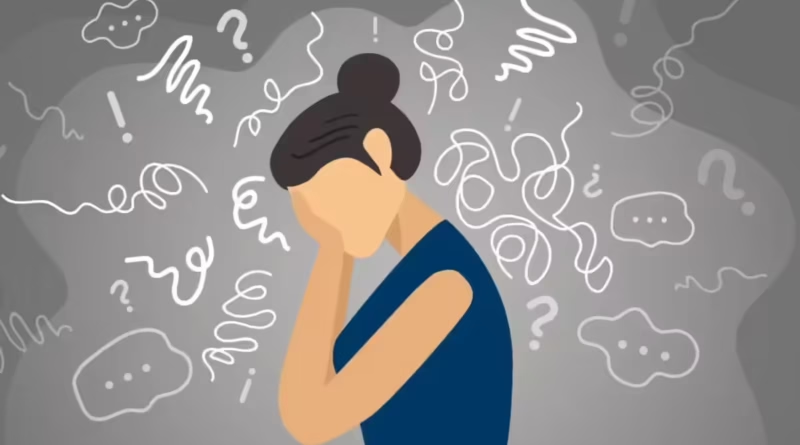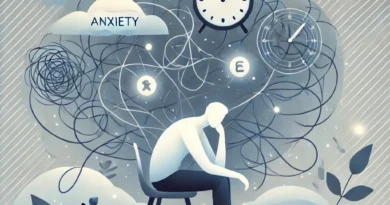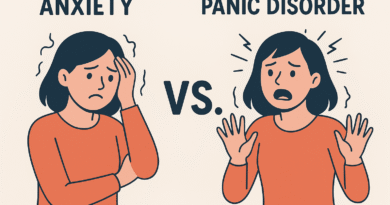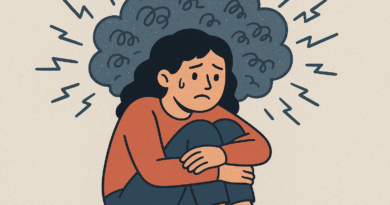Iterate Anxiety: Daily Habits to Escape the Anxiety Loop
Iterate Anxiety: Daily Habits to Escape the Anxiety Loop
Anxiety is not the same as normal stress; it can feel like a loop that keeps repeating of fear, doubt, and overthinking for a long time. I kept on trying to iterate anxiety into something manageable, but instead, I realized that I wasn’t just anxious. I was replaying the same cycle every day, resisting my own thoughts. If you ever felt like you’re stuck in the anxiety loop, you know how heavy and consuming it becomes.
Here’s the good news: anxiety does not have to control your life forever; it’s possible to be free. In this blog, I share my personal expressions and the tools that worked for me that helped me break the vicious cycle of anxiety from the change of mindfulness, awareness, and, when necessary, turning to options like Ambien medication.
Breaking Down the Vicious Cycle of Anxiety
Anxiety starts with just one small thought: What if something goes wrong? Those thoughts spark tension in your body, putting it into high alert with a fast heartbeat, problems with breathing, and low energy. When your brain reacts to those side effects as if they are danger signals, adding more fear. Soon, you’re caught in the vicious cycle of anxiety where the body and mind keep boosting each other.
At first, I did not realize that I believed that I had to control my anxiety by forcing my thoughts to stop, but fighting them only made the cycle stronger. But the more I tried, the worse it got without realizing. I was iterate anxiety without knowing it. The real change began when I shifted my focus from fighting my mind to gently working it.
When Anxiety Turns into Habit
At first, the idea of iterate anxiety didn’t make much sense to me, but now I see it as a habit of responding differently to anxious thoughts instead of being controlled by them. With every moment, I notice the patterns and take a deep breath, or write my feelings, or listen to soft music. I’m iterating; I’m teaching my mind a new healthy response.
Expanding the repeating cycle of iterate anxiety. I try to replace it with calming habits, like a walk in the fresh air or talking with supportive friends. Every small practice makes me more powerful or more resilient.
Signs You’re Stuck in the Anxiety Loop
Iterate Anxiety shows up differently for everyone, but common patterns include.
Overthinking: Mulling over the past or worrying about the future instead of staying present.
Avoiding Triggers: Skipping tasks or events that trigger you.
Physical Symptoms: Headache, Fear, Stomach problems, restlessness.
Repetitive worries: Going over the same “what if” scenarios in your head.
If this sounds the same, you’re likely stuck in an anxiety loop. Step one: recognize it. You can not break a cycle you don’t see.
How to Break the Anxiety Cycle: Personal Approaches
Breaking free from anxiety is possible with constant effort, with the steps that helped me learn how to break the anxiety cycle.
Breathing Practice
Anxiety loves fast breathing problems. I started practicing slow, measured breathing, inhaling for four counts. I learned to calm the nervous system and stop the cycle in its tracks.
Identify and Release Your Anxiety
When I notice myself spinning with worry, I say, “This is just my anxious loop.” By naming it. I could detach from it and see it as something temporary. That small shift was my first step in turning anxiety into something I could handle rather than be consumed by.
Journaling the Loop
Write about my overthinking that gave me less power. I realized my fear ended once they were on paper. This habit helps me to overcome the feeling of being stuck in the anxiety loop.
Meeting Your Worries Head-on
Running from the anxiety and fear only makes the cycle stronger. I slowly faced the situation that scared me, like speaking in public and sharing my feelings. Every small step gives me a chance to learn how I can heal from my anxiety.
Therapy and Medication Options
Sometimes managing anxiety alone is not possible. For me, counseling and therapy became an important part of my journey. In some situations, my doctor recommends Ambien medication to provide short-term relief from anxiety. This medication is used under medical guidance
Ambien: A Tool for Temporary Relief
Sometimes managing iterate anxiety alone is not possible. For me, counseling and therapy became an important part of my journey. In some situations, my doctor recommends Ambien medication to provide short-term relief from anxiety. This medication is used under medical guidance.
Not all anxiety can be managed through lifestyle changes alone. For Patients experiencing severe symptoms, Ambien medication or other prescribed treatment can provide short-term relief, but it also carries side effects. Never take without consulting your doctor or medical guidance. There is a high chance of addiction.
In my case. I take a small dose of medication when anxiety feels overwhelming. Combined with therapy, it gave me breathing room to build long-term coping skills. Medication is not a sign of weakness; it’s a tool that helps you learn how to break the anxiety.
How Xanax works in the brain
Your brain has a natural calming system, giving signals by a chemical messenger called GABA. When you’re anxious, that system does not always work well enough. Xanax helps GABA do its more strongly, so your mind and body can settle down.
Steps Along the Way
Healing anxiety is not about easing the fear completely; it is about changing how you respond to it. Learning to iterate anxiety. I will start seeing it as a signal rather than a trap. When anxiety rises and shows up, I now see it as an opportunity to breathe and realign.
If you’re feeling stuck in the anxiety loop, know that support is available. With patience, therapy, breathing exercises, or Ambien medication taken under medical guidance, you can step out of the clamorous life.
Final Thoughts
The vicious cycle of anxiety can feel endless, but it doesn’t define who you are. Each time you break the cycle or regain more control over your mind through self-awareness, daily routines, or professional guidance, you can retrain your mind to respond differently.
Iterate anxiety isn’t about getting rid of it but about turning it into a tool that makes you stronger, wiser, and more mindful.
Through self-awareness, daily routines, or professional guidance, you can retrain your mind to respond differently.
Iterate anxiety isn’t about getting rid of it; it’s about turning it into a tool that makes you stronger, wiser, and more mindful.




